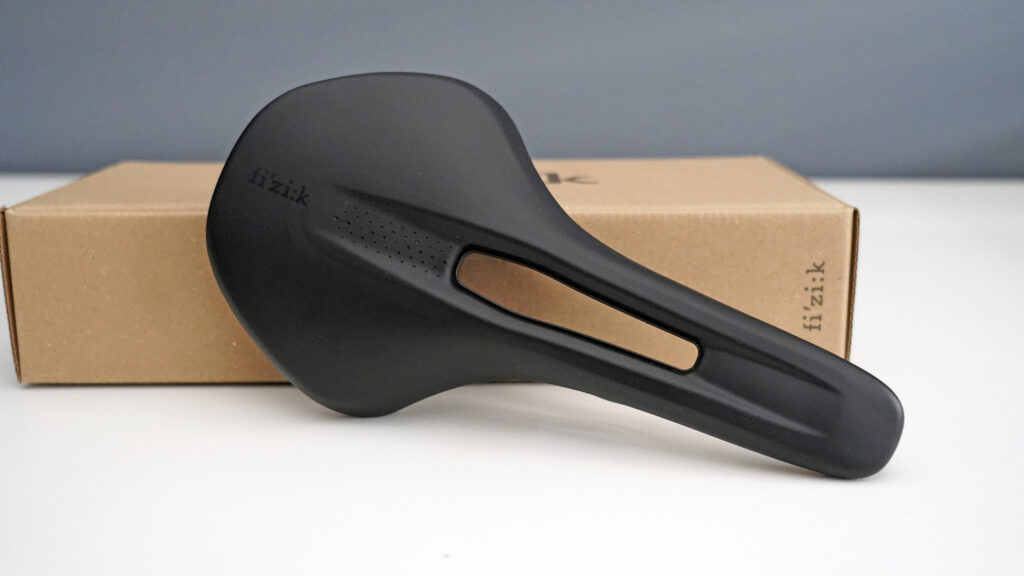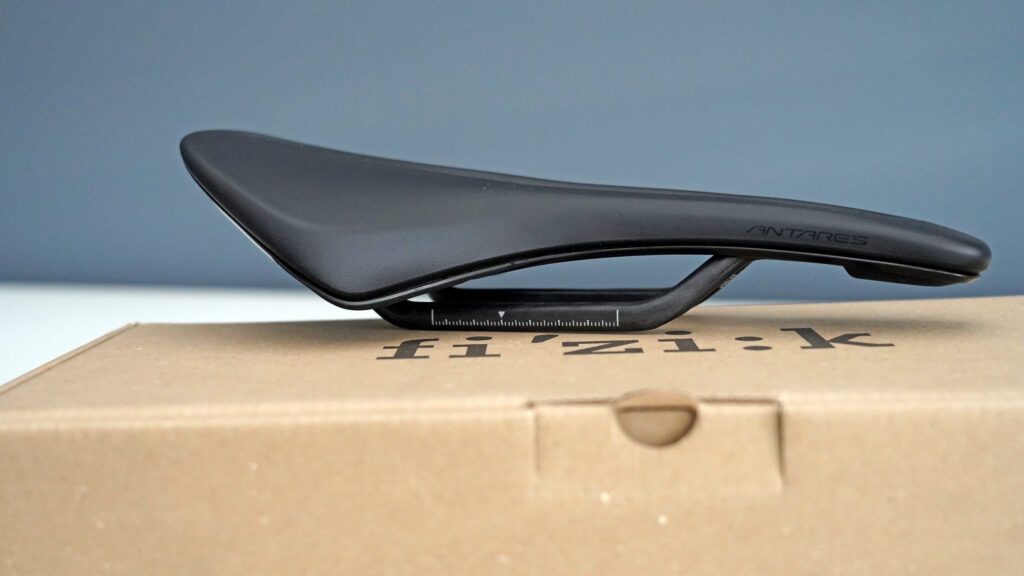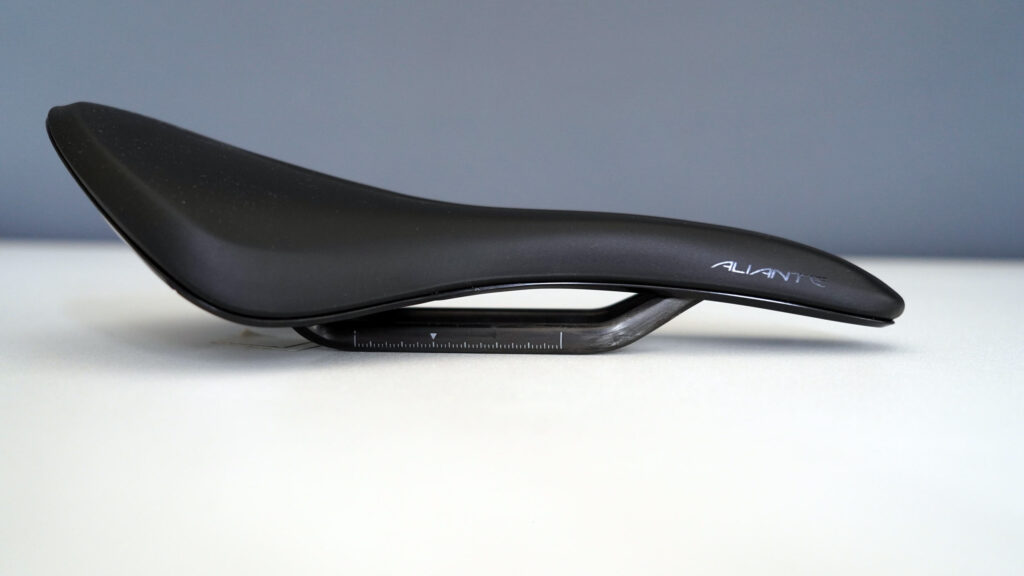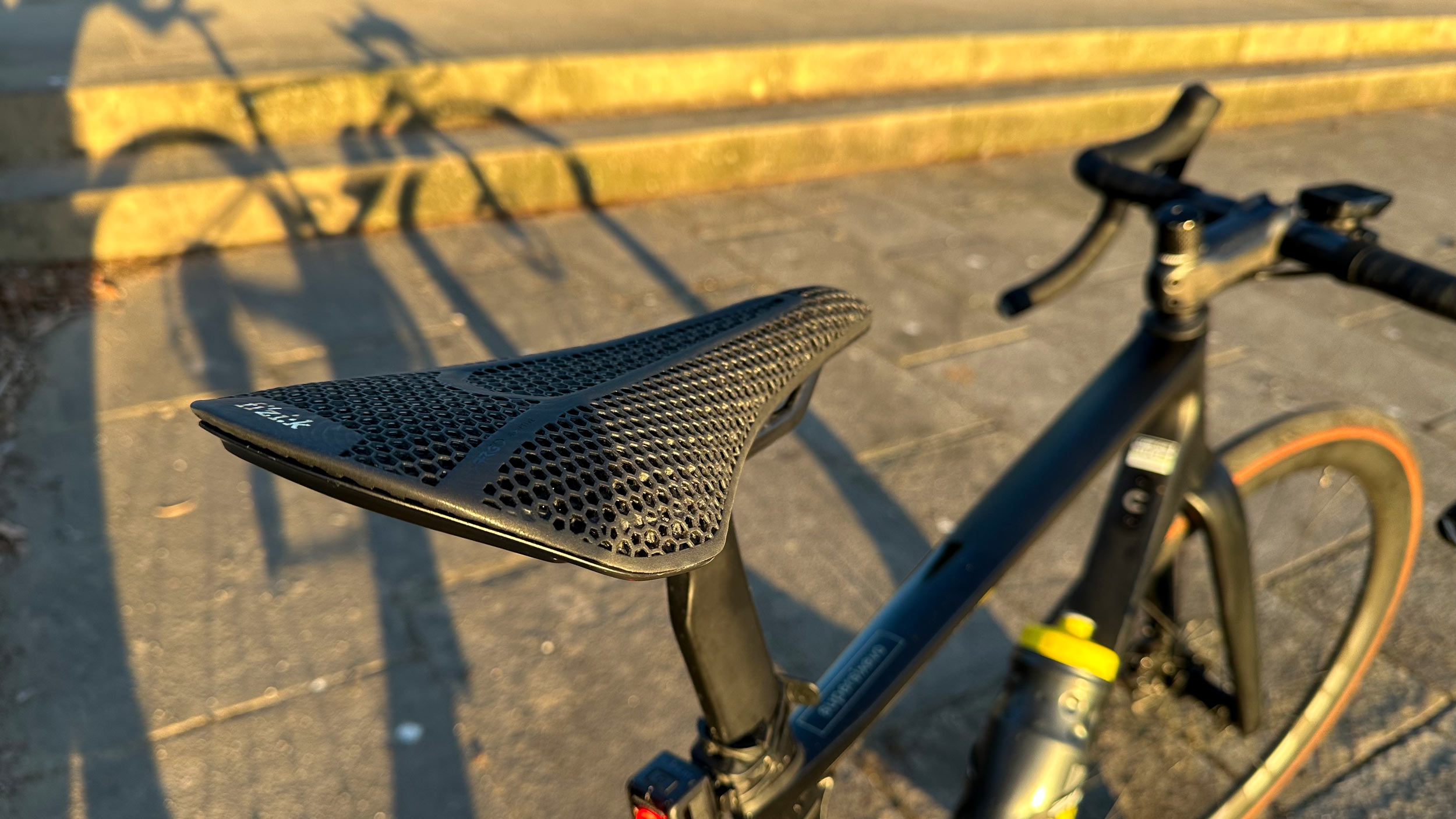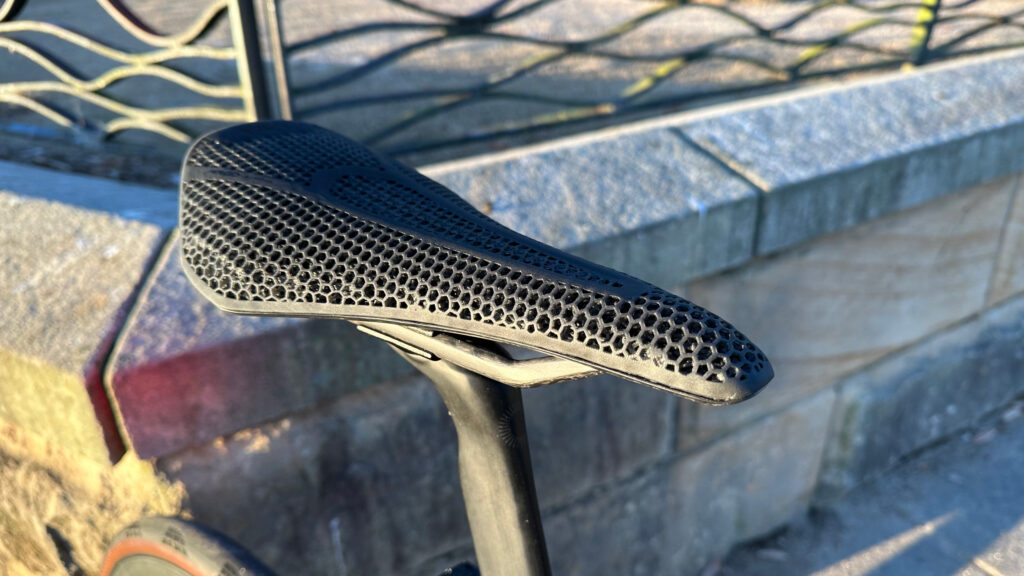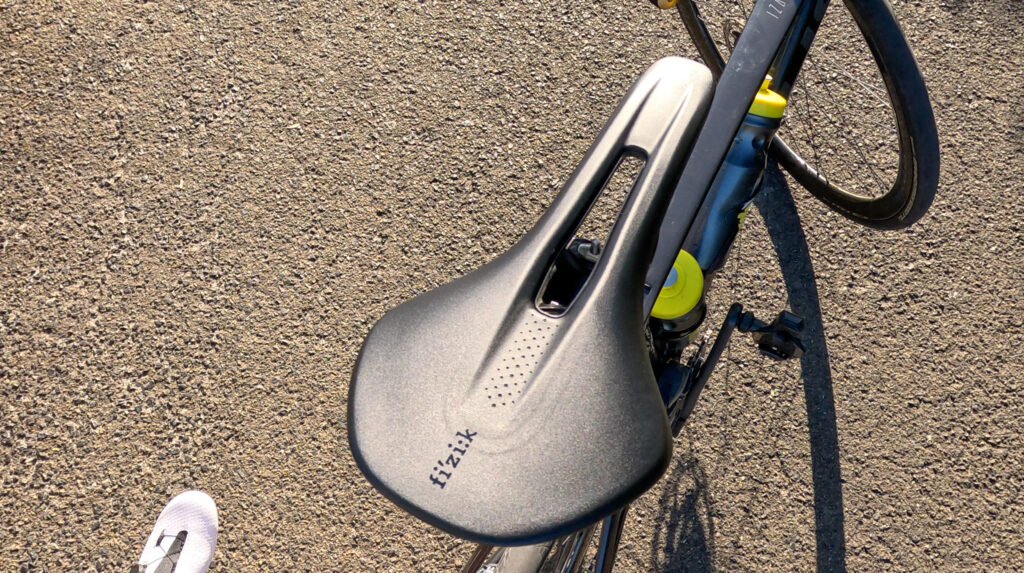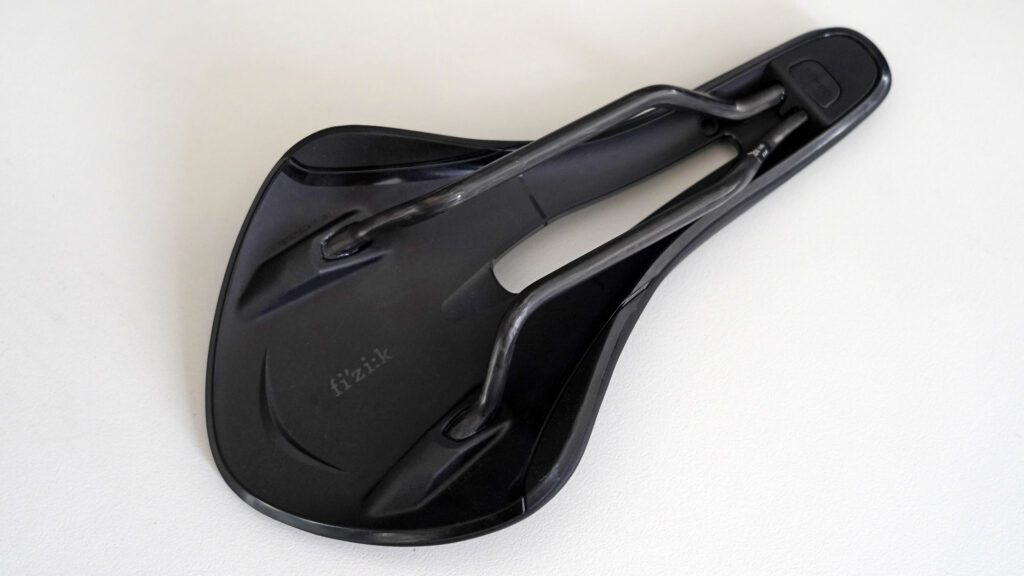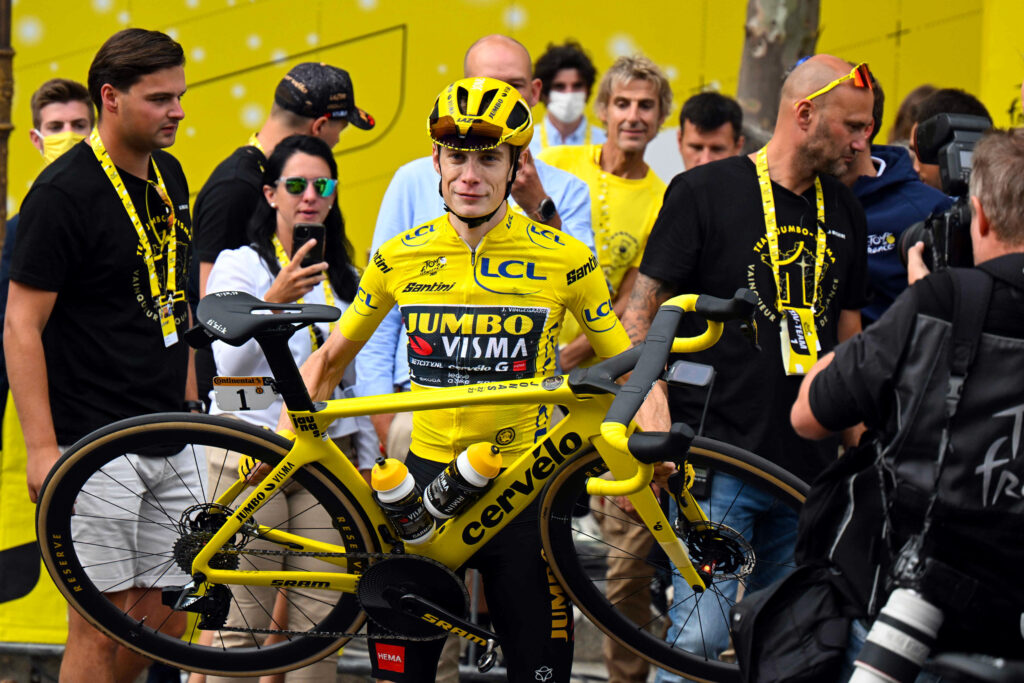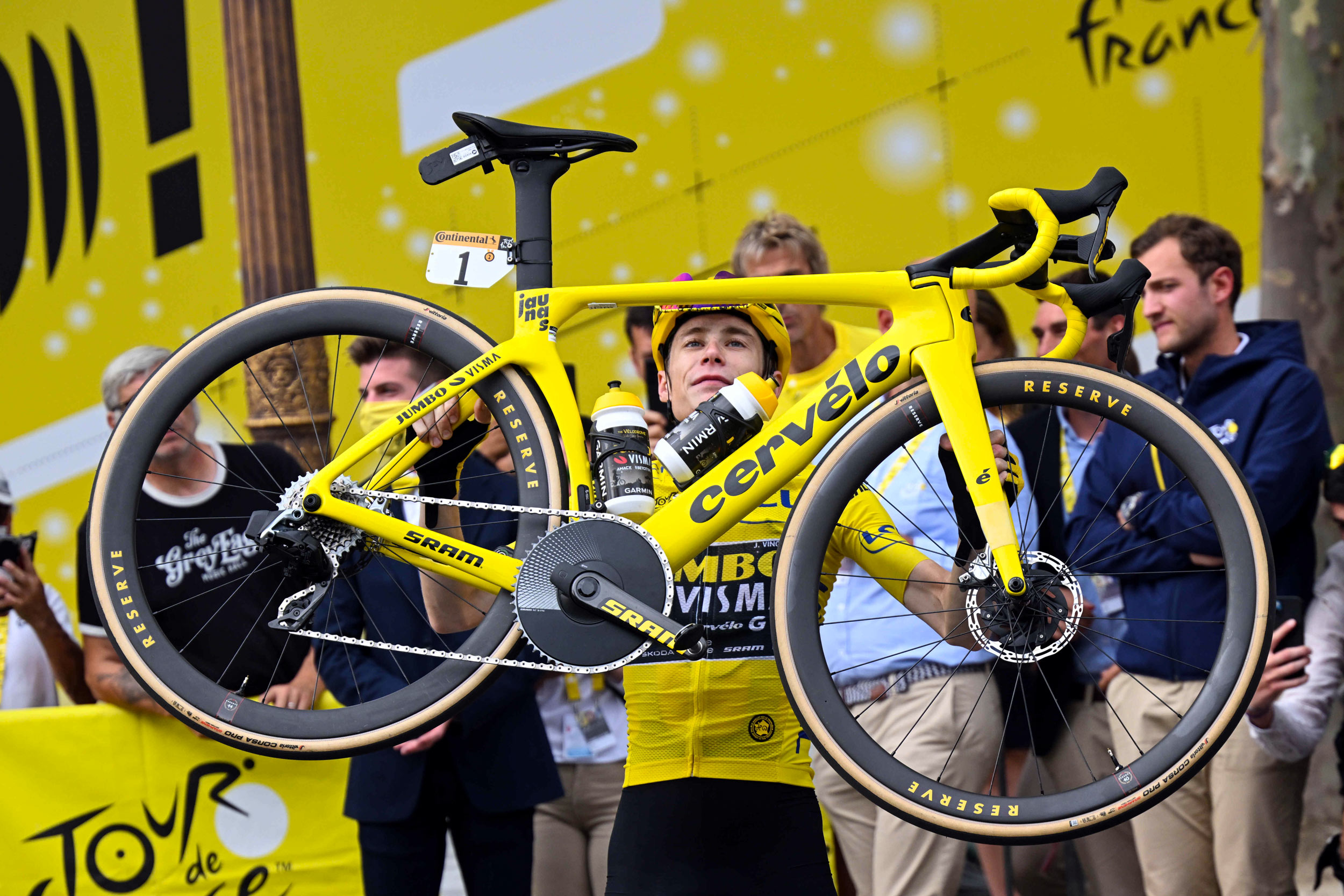There is a huge variety of cycling saddles in the modern market. After years of riding familiar shapes, it’s time to consider some other options…
Product Review by Rob Arnold
A few years ago Repenté, an emerging brand from Italy, sent a couple of saddles for me to sample. The relatively new company hasn’t really hit the mainstream but the shapes and quality of finish caught my attention as soon as I opened the package.
Since 2020, I’ve been riding the Spyd by Repenté. It suits my requirements well: good shape, slim design, sufficient padding offering considerable comfort… all in an attractive, lightweight (172g) package. It’s the saddle that has remained on my bike for a couple of years while the second option sent for review – the slightly lighter Aleena 4.0 (153g) – sits on the bike I use on the indoor trainer.
A recent trend for cycling saddles is to cut down the length in a quest for weight savings while also allowing riders to find a suitable position that fits regulations imposed for racing. In reality, kowtowing to the whims of the UCI isn’t high on the priority list for most riders but still designs like the Power saddle range (by Specialized) quickly gained a strong presence in the market.
Although the Repenté options suit me well, I’m also lucky to have ridden many test bikes over the years so am accustomed to sampling different saddle shapes. The Power saddle, for example, was fitted to a recent review bike – supplied by SRAM when the new Force AXS groupset was launched earlier this year.
The weight discrepancies from one saddle to the next can be considerable but this feature should be considered in context. You might shave a bit off your bike package but, in my appraisal, this shouldn’t be the main aim when selecting one of the few touch points.
Comfort and suitability to your riding style should surely be the main quest when choosing a saddle. And contemporary designs mean that there are also other aspects to consider.
For many years the traditional saddle setup on a road bike was to have it essentially parallel to the ground but there is an emerging trend of tipping the nose down slightly to provide a bit of push-back when applying power.
I’ve been told by some company reps that the industry has responded to different riding styles largely pioneered by the reality that more of us are spending time riding on the indoor trainer.
There are a few variables that exist in 2023 and a wealth of choice in saddle designs, with slight tweaks applied so riders can find something that suits their purpose perfectly.
Video review – part 2: the first ride (click the link below)
Exploring the options
Although I’ve found a saddle that has satisfied my requirements nicely, I’m no longer afraid to change things when it’s time for a review. There was, however, a time when I’d swap the original spec of review bikes that came through the RIDE Media office and insist on riding with the shape I’d been familiar with for many years, the Fizik Alianté.
With a slight upward curve at the rear, the Alianté was my go-to for a long time. Comfortable, slightly wider than what I now ride, and with a shape that allowed me to settle into a pedalling rhythm and feel efficient. When the pace picked up and more power was required, the Alianté allowed me to find a position that helped me squeeze a bit more speed from my legs.
Of late, when there’s a new shape on a review bike, I’m no longer as fussy. It’s easy to experiment with modern saddles because, on the whole, they are either good or better.
When it comes to weight savings, the materials used on the rails usually set the tone. Chromoly, titanium, or carbon-fibre feature on saddle options from most of the major brands mean pricing usually goes up as the weight goes down.
It’s easy to spend a lot of money on a bike saddle and in 2023 it’s not only about the materials used for the rails; we have also seen an emergence of new padding that has been made possible thanks to 3D printing technology.
Fizik’s Argo Adaptive range is one example of the ‘honeycomb’ style of padding and there are plenty of other saddle brands that are taking a similar approach.
For me, one of the most noticeable benefits of the Adaptive style of padding is that it limits friction from the pedalling action on your inner thigh and, importantly, also absorbs the chamois of your knicks in a way that makes you feel more planted than more traditional top coatings (eg. leather).
Saddles shapes have never been as varied as they are now and although there are times when I’ve been resistant to change, it’s a great time to experiment to see if something you know to be good can indeed be better for your riding style.
Also worth noting is that the major companies often supply bike shops with a range of test saddles. If you’re spending considerable money on a new seat, you want to know that it’s going to suit your requirements and your body shape.
Being obstinate like I once was (ie. during my Alianté-only phase) could mean you’re compromising your ride, so be sure to take advantage of a shop’s test range – and, ideally, don’t just swap and go around the block… the more time you spend on a saddle, and the more you fiddle with the fitting variables (tilt as well as set-back, etc), the more you’ll realise that initial impressions can change dramatically.
Furthermore, the closer you look at the wealth of saddle choice in the market, the more you’ll notice the variations on offer. And it’s not just about the materials used and weight (plus price) but also the measurements.
There is often a variety of widths for each saddle shape and it’s worth taking the time to try as many as possible before you buy. You might not even need to go outside the bike shop; some retailers have indoor trainers on the floor that will allow you to sample different shapes while shifting through the gears and/or refining the position… or you might even get a chance to fit the test saddles to your own bike and, for example, ride a Wahoo Rollr.
From Repenté to Fizik: Antares… then 2023 Alianté
If you click the link on the first video embedded with this post, you’ll see the unboxing of what I thought was the new Fizik Alianté. You’ll also see my surprise when I actually pull the Antares out before offering an overview of the three saddles sent by Fizik for review.
To avoid the risk of being suckered into the company line – ie. commentary confirming the marketing claims – I try to refrain from reading the press releases when products I know I’ll be reviewing are launched. Instead, I prefer to make my own assessment about aesthetics, design concepts, material choice and other considerations when I’m looking at the item or using it on a ride.
What is immediately obvious about the saddles from the Fizik range sent for review is that the finish is first-class and the weight discrepancies only minor from one saddle to the next.
- Fi:zi’k Vento Argo R1 Adaptive (140mm width): 176g
- Fi:zi’k Alianté R1 (145mm width): 179g
- Fi:zi’k Antaries R1 (140mm width): 163g
What I would discover after several test rides, however, is that the ideal setup from one saddle to the next can vary considerably. This relates largely to the tilt on the bike, and making sure that it is positioned in an appropriate way.
A big mistake on my first ride with the Antares, for example, is that I positioned it in a way that mimicked the nose-down angle that I’ve become accustomed to while riding other saddles in recent years. It took only a matter of minutes before I realised this wasn’t right for this style.
After the first few kilometres, I pulled over and adjusted the tilt so that it was almost parallel with the ground… but still insisted on adopting a slightly nose-down approach. The sensations improved but it still felt wrong and prompted me to wonder if the Antares was, in fact, not the saddle shape for me.
The more I rode, the more questions about the Antares came to mind. What is the benefit of the pronounced flare as the saddle goes from slim at the front to broad at the rear? Why was I not able to find the sweet spot while pedalling in an aero position? How is this saddle meant to be fitted? Etc.
A short ride around the block isn’t going to give you the time you need to fiddle with the setup and find the answers, but if you invest a bit of thought and are willing to tweak things a little here and there, I’m confident to say you’ll eventually find the right position.
If you watch the ‘First Ride’ video about the Antares, be sure to stay to the end as there is an important punchline: all that I thought was weird soon became perfect when I got the tilt angle right.
After an hour struggling to find the right position and wondering if the shape simply didn’t suit my riding style, I pulled over again and levelled out the saddle (from nose down to what is effectively old-school thinking, ie. parallel to the ground). Ta dah! In an instant I found the sweet spot, the ideal position… the intended arrangement for the Antares.
What seems right for one saddle doesn’t always translate to another.
The less sculpted rear section of the Antares (in comparison with the Alianté and Repenté Spyd) provides a great, comfortable platform that welcomes your sit bones – but the angle has to be right or else it feels like you’re always pushing back.
The Antares is the saddle of choice for Jonas Vingegaard. The winner of the Tour de France can find a sweet spot (with his saddle set up parallel to the ground) so clearly something is working well. Meanwhile, the Dane’s main rival Tadej Pogacar opts for the slight downward tilt for his (Prologo Scratch M5) saddle set-up. Old-school vs new-school thinking… and both are obviously damn effective if you have an engine like those two do.
We can assume this pair have done more than read an online catalogue and/or adhere to the wishes of team sponsors. They are looking to extract as much power as possible while having a touch point that keeps them comfortable, without distraction, and in keeping with their respective riding styles.
When it comes to saddle choice, it’s not a matter of replicating what you’ve had before, what the professionals are using, or even following the suggestions of manufacturers. There are many variables and each impacts how you feel on the bike. Be sure to look around, consider the many options and experiment as much as you can.
Ignore your past perspective and take your time to make adjustments. Saddles in 2023 are good or better, and some are simply more suited to you and how you ride. If you’ve found the right one, please leave a comment on the YouTube videos on the topic (one of RIDE Media’s social portals) and let me know what it is that makes you happy about you selection.
– By Rob Arnold
Subscribe to RIDE Media’s YouTube channel and get notifications of new video uploads.


